#Anti-submarine aircraft
Photo

USN P-3 Orion passing by Mount Fuji, Japan
#USN#Anti-submarine aircraft#Maritime surveillance aircraft#Lockheed#P-3#Orion#Mount Fuji#Navy#Plane
212 notes
·
View notes
Photo
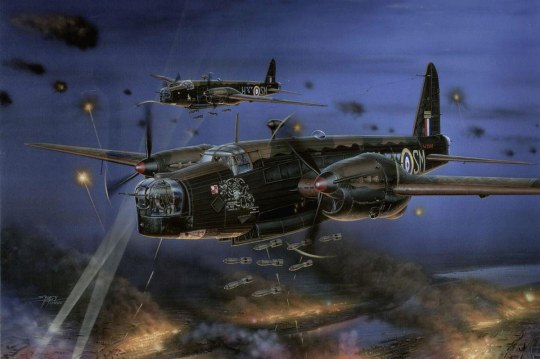
Bombardier moyen Vickers Wellington Mk. II
©Artwork by Stan Hajek
#WWII#Artwork#Stan Hajek#Royal Air Force#RAF#Aviation militaire#Military aviation#Bombardier#Bomber#Bombardier moyen#Medium Bomber#Avion de lutte anti-sous-marine#Anti-submarine aircraft#Vickers Wellington#Wimpy
103 notes
·
View notes
Text
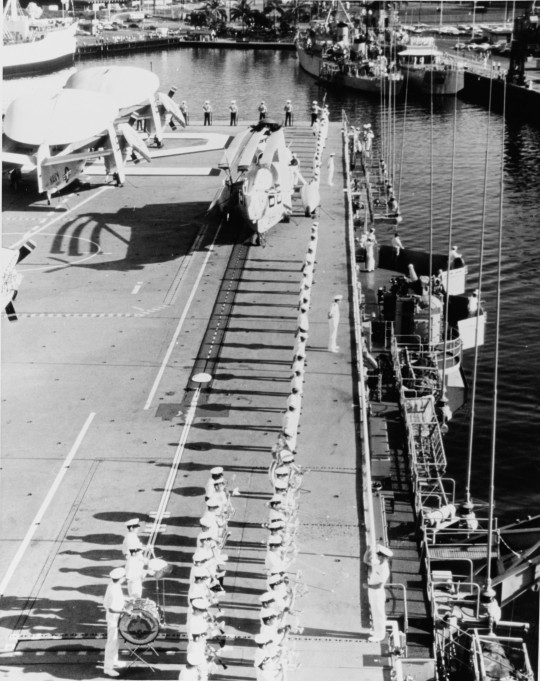
"Crewmen man the rail of USS HORNET (CVS-12), as the carrier arrives in port at Pearl Harbor, Hawaii with the Apollo 12 Command Module and three astronauts aboard."
Date: November 28, 1969
Naval History and Heritage Command: K-80892
#Apollo 12#NASA#Recovery#USS Hornet (CV-12)#USS Hornet#Essex Class#Aircraft Carrier#November#1969#Pearl Harbor Navy Yard#Pearl Harbor#Hawaii#Helicopter 66#Sikorsky SH-3 Sea King#SH-3#Helicopter#Helicopter Anti-Submarine Squadron Four#HS-4#my post
30 notes
·
View notes
Photo
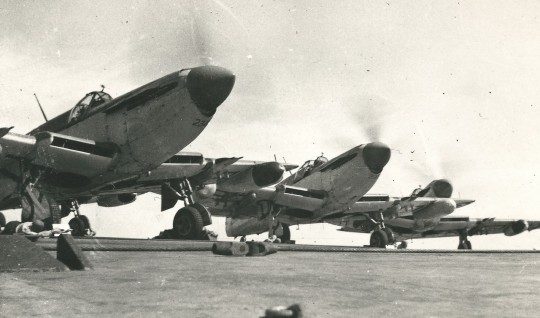
Fairey Firefly. Aboard HMS Theseus during the Korean War
50 notes
·
View notes
Text
Interview: Lockheed Martin has integrated 70 Indian suppliers into global defence supply chain
Interview: Lockheed Martin has integrated 70 Indian suppliers into global defence supply chain
In an interview ahead of DefExpo-2022, Lockheed Martin India’s vice president and chief executive William L. Blair tells our editor N. C. Bipindra that hundreds of domestic suppliers, including over 140 MSMEs, feed into the joint ventures set up by the American defence major in India. The F-21 industrial offering will put India at the epicentre of the world’s largest fighter jetproduction and…

View On WordPress
#Aatmanirbar Bharat#Aatmanirbhar Bharat#Aeroplane#Aerospace#Air Force#Aircraft#Airplane#American#Anti-Submarine Warfare#Anti-Surface Warfare#Armed Forces#Army#Artificial Intelligence#Ashok Leyland#ASuW#ASW#Atmanirbar Bharat#Atmanirbhar Bharat#BEL#Bharat Electronics Limited#Bill Blair#Black Hawk#C-130J#Center of Excellence#Chopper#Copter#Defence#Defence Exports#Defense#DefExp
0 notes
Text
Nimrod: Rise and Fall :: Tony Blackman
Nimrod: Rise and Fall :: Tony Blackman

View On WordPress
#51 squadron#978-1-9081-1779-3#airborne warning#aircraft construction#aircraft design#aircraft histories#anti submarine warfare#avroe#bae systems#books by tony blackman#british aeronautics#british aircraft#falklands campaign#first edition books#nimrod aew#nimrod mra4#nimrod reconnaissance aircraft#nimrod search rescue sorties#reconnaissance aeroplanes
0 notes
Text
Taiwan says it cannot afford new U.S. anti-submarine helicopters
New Post has been published on https://www.timesofocean.com/taiwan-says-it-cannot-afford-new-u-s-anti-submarine-helicopters/
Taiwan says it cannot afford new U.S. anti-submarine helicopters

Taipei (The Times Groupe)- Taiwan announced on Thursday that it had abandoned plans to buy advanced new anti-submarine warfare helicopters from the United States because they were too expensive.
Taiwan had earlier announced plans to purchase 12 MH-60R anti-submarine helicopters from Lockheed Martin Corp (LMT.N) unit Sikorsky. Taiwanese media, however, reported that the United States had rejected the sale since it did not meet Taipei’s needs.
Chiu Kuo-cheng mentioned the helicopter case first when he was asked in parliament about recent changes to Taiwan’s purchases of U.S. weapons.
“The price is too high, beyond the capability of our country,” he said.
Other arms purchases have also been delayed, including the M109A6 Medium Self-Propelled Howitzer artillery system and mobile Stinger anti-aircraft missiles.
In Ukraine, Raytheon Technologies’ (RTX.N) Stingers have been used against Russian aircraft, but U.S. supplies have declined and there are significant obstacles to producing more of the anti-aircraft weapons.
Chiu said they have already signed the contract and paid for the Stingers, and they plan to pressure the United States to deliver them.
“We do not view arms sales as a trivial matter, and we have backup plans,” he said without further explanation.
Taiwan says the United States offered it alternatives to the M109A6, including rocket launchers mounted on trucks made by Lockheed Martin called the High Mobility Artillery Rocket System, or HIMARS.
They are still considering their options on that front, Chiu said.
Despite being claimed by China as its own territory, Taiwan is undertaking a military modernisation programme to strengthen its ability to fend off a Chinese attack with precision weapons like missiles.
Tsai Ing-wen advocates asymmetric warfare, which involves developing high-tech, highly mobile weapons that are hard to destroy and can deliver precise attacks.
U.S. officials have been pushing Taiwan to upgrade its military so it can become a “porcupine”, hard to attack by China.
With the goal of forcing the democratically governed island to accept Beijing’s rule, China has stepped up its own military modernization and pressure against Taiwan.
During the recent period – he did not specify when – there were many “enemy ships” in the waters around Taiwan, which “stand off” with Taiwanese forces, though he did not provide details.
A total of eight Chinese vessels, including the aircraft carrier Liaoning, passed between islands in the southern Okinawa chain of Japan on Monday, which is to the northeast of Taiwan.
#anti-aircraft weapons#attack by China#Chinese vessels#Chiu Kuo-cheng#Lockheed Martin Corp (LMT.N)#M109A6 Medium Self-Propelled Howitzer artillery system#MH-60R anti-submarine helicopters#military modernisation programme#mobile Stinger anti-aircraft missiles#Raytheon Technologies' (RTX.N) Stingers#Russia Ukraine War#Sikorsky#Taipei#Taiwan#Taiwanese forces#Taiwanese media#The Times Groupe#Tsai Ing-wen#U.S. weapons#United States#World
0 notes
Text

A U.S. Navy Douglas SBD-3 Dauntless flies over the aircraft carriers USS Enterprise (CV-6), foreground, and USS Saratoga (CV-3) near Guadalcanal on 19 December 1942. The aircraft is likely on anti-submarine patrol. Saratoga is trailed by her plane guard destroyer. Another flight of three aircraft is visible near the Saratoga. The radar array on the Enterprise has been obscured by a wartime censor.
Both carriers had been badly damaged off Guadalcanal the previous August but had been patched up at Pearl Harbor and sent back on duty as the only USN fleet carriers left in the Pacific.
86 notes
·
View notes
Text

I wanted to start posting some of my collection of plane pics between art, so I present this absolute stick bug of a bomber, the British Blackburn R.T. 1 Kangaroo.
It saw service during WWI as an anti-submarine patrol plane and was operated by only one squadron, No. 246. Its service record is nothing special, either - it only sunk one U-boat during the six months it was active.
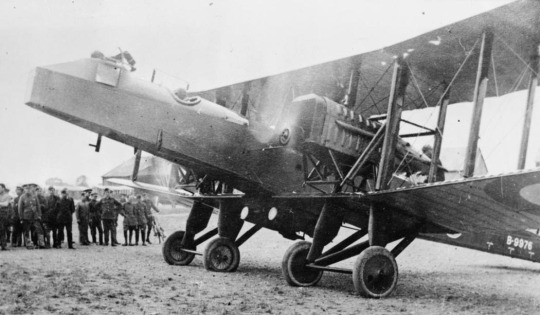
After the war, a couple were modified to serve as passenger aircraft to feed the burgeoning civil aviation market.

58 notes
·
View notes
Text

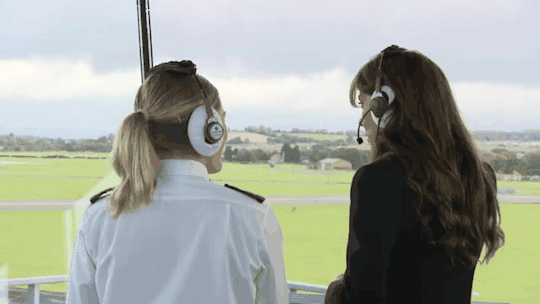
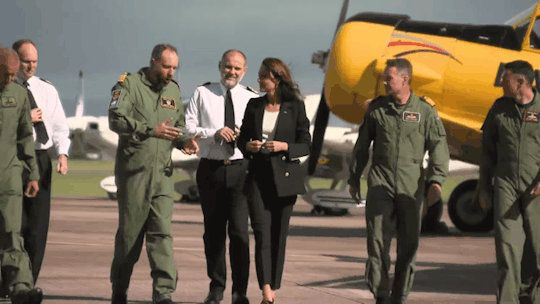
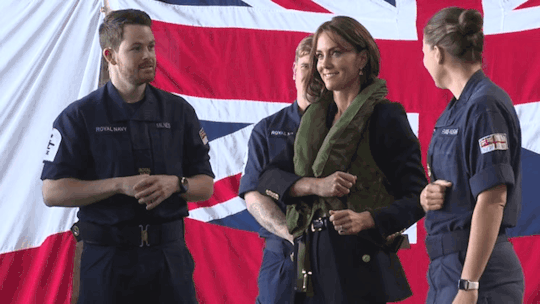






THE PRINCESS DIARIES ♚
18 SEPTEMBER 2023 || ROYAL NAVAL AIR STATION YEOVILTON
The Princess of Wales paid a visit to Royal Naval Air Station Yeovilton in her role as the Commodore-in-Chief of the Fleet Air Arm.
During her visit Catherine met and conducted training exercises with the Royal Navy Survival Equipment (SE) Technicians. She also met service personnel and viewed - the Merlin MK4 and the Merlin MK2.
The former is deployed by Royal Marine Commandos globally to provide disaster relief. While the latter is an Anti-Submarine Warfare platform used for a variety of activities including tracking submarines, supporting disaster relief operations and providing training for the next generation of engineers and aircrew.
Catherine also spent time in the Air Traffic Control (ATC) tower where she visited the Visual Control Position to meet with staff and view the aircraft operating in the airfield. She also visited a hangar to engage with personnel and hear about different operations within the Fleet Air Arm.
The Princess of Wales also visited the Wildcat Training Centre, to meet the loading team who are trained to fit a variety of weapons to the Wildcat MK2 helicopter.
This was Catherine's first engagement in her new role.
#princess of wales diaries#princess of wales diaries 23#princess of wales#the princess of wales#princess catherine#catherine wales.#my gifs#royaltyedit#royalty gifs#royalty edit#18092023#british royal family#british royals#royalty#royals#brf#kate middleton#royal#catherine middleton#duchess of cambridge#british royalty#gifs#RNASYeovilton23
81 notes
·
View notes
Text
I know this is a like “what fucking kind of discourse is happening in your circles” type deal but like legitimately. You do not take down empires with hexes and spells you take them down with cruise missiles and anti-aircraft-carrier submarines and drone strikes and anti-tank sabot munitions and anti-materiel rifles. A spell is not going to build a tank.
16 notes
·
View notes
Text
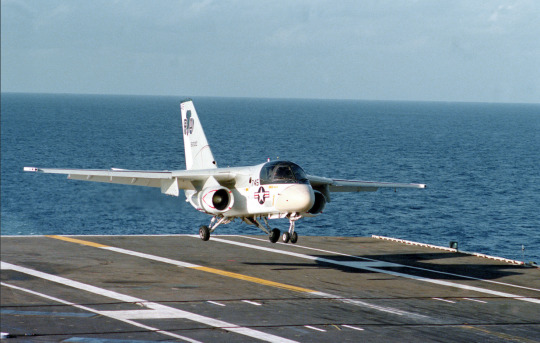
S-3A landing on the USS Independence
30 notes
·
View notes
Text

Canada selects Boeing's P-8A Poseidon as its new multi-mission aircraft
The partnership with Canadian industry will provide long-term economic prosperity to Canada 🇨🇦
Fernando Valduga By Fernando Valduga 11/30/2023 - 18:52 in Military
With the P-8, Canada guarantees the interchangeability of allies NORAD and FIVE EYES.
The government of Canada signed a letter of offer and acceptance of foreign military sales for up to 16 Boeing P-8A Poseidon aircraft, as part of the Canadian Multimission Aircraft Project (CMMA).
Canada joins eight defense partners, including all allies of FIVE EYES, the intelligence alliance that also includes the United States, the United Kingdom, Australia and New Zealand, and becomes the fifth NATO nation to have selected the P-8 as its multi-mission aircraft. The first delivery is scheduled for 2026.

“The P-8 will strengthen Canada's defense capability and readiness, and we look forward to delivering that capability to the Royal Canadian Air Force,” said Heidi Grant, president of Business Development at Boeing Defense, Space & Security. “Together with our Canadian partners, we will deliver a strong package of industrial and technological benefits that will ensure continued prosperity for Canada's aerospace and defense industry.”
The P-8 is the only proven in-service and production solution that meets all CMMA requirements, including range, speed, strength and payload capacity. This decision will benefit hundreds of Canadian companies and bring decades of prosperity to Canada through the support of the platform provided by our Canadian industrial partners.
The acquisition of P-8 will generate benefits of almost 3,000 jobs and $358 million annually in economic output for Canada, according to a 2023 independent study by Ottawa-based Doyletech Corporation.
“This is a very important day for the Royal Canadian Air Force and Boeing,” said Charles 'Duff Sullivan, managing director of Boeing Canada. "The P-8 offers unparalleled capabilities and is the most affordable solution for acquisition and life cycle maintenance costs. There is no doubt that the P-8 will protect Canada's oceans and borders for future generations."

The partnership with Canadian industry will provide long-term economic prosperity to Canada.
The Poseidon Team is the cornerstone of Boeing's Canadian P-8 industrial partnership, composed of CAE, GE Aviation Canada, IMP Aerospace & Defense, KF Aerospace, Honeywell Aerospace Canada, Raytheon Canada and StandardAero. The team is based on the 81 existing Canadian suppliers for the P-8 platform and more than 550 Boeing suppliers in all provinces, contributing to the company's annual economic benefit of approximately CAD$ 4 billion for Canada, supporting more than 14,000 Canadian jobs.
With more than 160 aircraft delivered or in service and 560,000 collective flight hours, the P-8 has proven capabilities for anti-submarine warfare, anti-surface warfare, intelligence, surveillance, reconnaissance and humanitarian assistance/disaster relief response.
Tags: Military AviationBoeingP-8A PoseidonRCAF - Royal Canadian Air Force/Canada Air Force
Sharing
tweet
Fernando Valduga
Fernando Valduga
Aviation photographer and pilot since 1992, has participated in several events and air operations, such as Cruzex, AirVenture, Dayton Airshow and FIDAE. He has work published in specialized aviation magazines in Brazil and abroad. Uses Canon equipment during his photographic work in the world of aviation.
Related news
BRAZILIAN AIR FORCE
UFSM receives A-1 jet donated by FAB
30/11/2023 - 18:01
One of the first of the 32 F-16s for Romania being delivered by the Norwegian Minister of Defense on November 28. (Photo: Norwegian Armed Forces)
MILITARY
Romania receives first F-16s that were from the Norwegian Air Force
11/30/2023 - 5:00 PM
HELICOPTERS
Norway says goodbye to its last Westland Sea King helicopter
11/30/2023 - 4:00 PM
MILITARY
HENSOLDT supports BAE Systems in the development of the Striker II fighter pilot helmet
11/30/2023 - 2:00 PM
MILITARY
First Belgian F-35A Lightning II starts painting process
11/30/2023 - 1:00 PM
AIR CARGO
Atlas Air places new order for Boeing 777F freighters
11/30/2023 - 10:30
19 notes
·
View notes
Note
What do you think, either at the end of it or when it was launched during the Cold War, was the single most dangerous and combat-effective naval vessel?
If you say any air craft carrier, then you're cheating.
In terms of sheer dakka, the Kirov-class battlecruiser.

But after the loss of the Moskova, I think these were just for show, so for actual usefulness, and because I like them, the Ticonderoga cruisers, as they became the deadliest anti-aircraft vessel in the world, and in a way they still are.

They basically ensured the survival of carrier battle groups against swarms of soviet air-launched anti-ship missiles.
But in overall terms of naval game changing, the Seawolf-class of nuclear attack submarines, which basically made all forms of at the time modern anti-submarine warfare obsolete overnight, the Dreadnought of the modern world.

66 notes
·
View notes
Text
Futuristic Ekranoplan Ground Effect Flying Craft - Pt 1
The Soviet Ekranoplan (Russian for ground-effect plane) was a strange half-ship, half-plane craft that made many promises but wasn't very good at keeping them.
In the mid-1950s Robert Bartini became involved in designing ground-effect vehicles.

His last known project was the Bartini Beriev VVA-14, an experimental ekranoplan featuring vertical takeoff and was intended to be used in anti-submarine warfare against American Submarines.
There were many design hurdles along the way when developing the VVA-14 and but before they could be overcome Robert Bartini died in 1974 at age 72 and the VVA-14 was cancelled

One of Bartini's more incredible designs was an enormous flying aircraft carrier. The proposed 5,000 ton ground effect vehicle would be large enough to carry 15 to 25 aircraft. This project also died with Bartini in 1974

I've been interested in these designs and used the images to try to get similar more futuristic designs. Most of the early results were not very close to my goal but were interesting.

#soviet#groundeffectplane#ground effect#yan61#YAN61#bartini#ekranoplan#bartini beriev#vva-14#caspian sea monster#midjourney#ai artwork#generative art#aiartcommunity#science fiction art#sci fi art#spaceship#spaceships#retrofuturism#retro futurism#scifiart#aviation
24 notes
·
View notes
Text








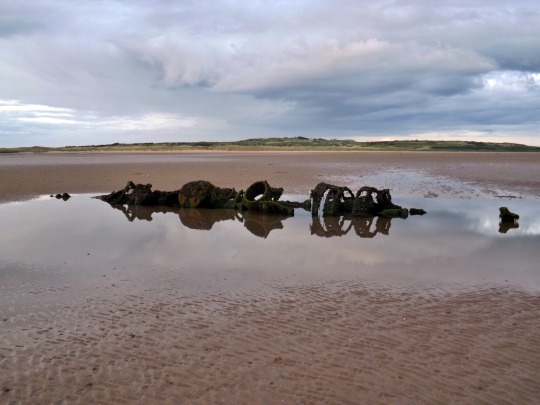

Aberlady Bay’s midget submarines.
I took a trip out to Aberlady last night to catch the low tide where these relics from World War Two are left decaying as the tide comes in and out.
In the spring of 1946, two midget submarines were towed to Aberlady Bay and tethered on either side of an anchor point made of one old concrete anti-tank block set on top of four others. There, over two days of trials in the first week of May, they were fired at by aircraft including Mosquitoes and Seafires (the naval version of the Spitfire) in an experiment to judge the effectiveness of 20 mm cannon shells against the submarines’ steel hulls.
The story of the Aberlady Bay midget submarines was uncovered brilliantly by a researcher named Alison Boutland in a report for the Nautical Archaeology Society. She was able to identify the submarines as XT-craft, a training variant of the X-craft mini submarine.
X-craft were about 16 metres (52 ft) long and powered by a diesel engine when on the surface and an electric motor when underwater. They had a crew of four: a commander, a pilot, an engineer (known as the engine room artificer, or ERA) and a specialist diver. They were used in September 1943 in a daring raid on the German battleship Tirpitz in a fjord in the far north of Norway – a mission that inspired the 1955 film ‘Above us the Waves’, starring John Mills.
The XT submarines, built by Vickers Armstrong at Barrow-in-Furness, were used not just for training X-craft crews, but also to stand in for full-size submarines in training exercises in which they were hunted from air and sea. The XT-craft were simpler than X-craft, since they did not need as much equipment. In particular, they did not have a retractable periscope; the periscope was fixed in a fin-like housing on the top of the submarine. The distinctive eye-shaped attachment point for this periscope housing was clearly identified by Boutland on the two Aberlady Bay wrecks.
Six XT-craft were built, named Extant, Sandra, Helen, Excelsior, Extended and Xantho. When the war in Europe drew to a close, they were no longer needed, and in June 1945 all six were sent to the Naval Construction and Research Establishment in Rosyth. Boutland was not able to figure out which of the six were used for the target trials, although she did conclude that the better-preserved wreck is probably not XT-5, Extended, which, as its name suggests, was modified to be a little longer than the others.
The cannon-fire trials took place on May 1, 1946 and, after the subs were patched up and re-floated, May 6, 1946. The website East Lothian at War, which has the dates as May 2 and May 7, says that the first trial involved armour-piercing shells and the second high-explosive shells, and that the latter proved more effective. Surviving documentation includes annotated photos of the subs showing the damage after the attacks.
Aberlady Conservation and History Society was recently given movie footage of the trials, filmed by a naval officer from the deck of a boat from which the operation was observed, and in 2019 the footage was digitised and posted on YouTube, the footage, although in colour, is not great, I will post it below for you to have a wee look at.
An interesting addition to the story of the submarines comes from Coastkid, a local blogger and Surly fat bike enthusiast, who has evidence that the subs continued to be used as targets for live firing practice by aircraft based at Drem. He recalls working as a greenkeeper at Gullane in the 1980s and finding dozens of spent 0.5 inch shell cartridges as well as 20 mm cartridges, and he was told by a retired tractor driver that aircraft used to line themselves up using a marker pole behind the seventh tee on Gullane No 3 course, and fire when over the rows of anti-tank blocks, near the green of the twelfth hole on No 2 course.
youtube
25 notes
·
View notes